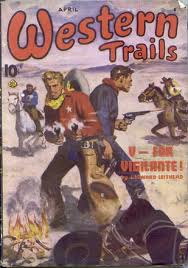In Nevada, where highwaymen were active, Egan, Hamilton, Treasure City and other towns organized protective associations with written rules. Aurora formed one in 1864 after about thirty citizens had lost their lives by violence in three years. The vigilantes caught four of the outlaws, built a scaffold in front of the armory and placed four nooses. When the governor heard what was going on and wired an inquiry, the United States marshal replied, “Everything quiet in Aurora. Four men to be hanged in fifteen minutes.” Then, as a crowd watched, the four stretched rope. At Dayton, Carson, Virginia City, and elsewhere, vigilance committees, remained at worked for a decade or longer. In Colorado, outlaws often were sent to the next world in economy-sized packages. Near Sheridan a committee strung four desperadoes from a railroad bridge. On the Denver and Cheyenne road to the north, seven bandits were dropped from another trestle. Denver miners formed a people’s court in 1859 and hanged from a cottonwood a prospector who had killed another for his gold. The next year the same court strung up four killers. The most remembered was James Gordon, who had killed a man for refusing to drink with him at a bar. His hanging was witnessed by several thousand, whom the mounted Jefferson Rangers kept in order. Most of the Colorado mining camps organized people’s courts in the 1860’s. One historian noted that such courts “were about the only ones thoroughly respected and obeyed.” Their proceedings were open and orderly, he said. “They approached the dignity of a regularly constituted tribunal. The prisoner had counsel and could call witnesses if the latter were within reach. 
Follow Me
© 2025 Chris Enss | Privacy Policy | Design by Winter Street Design Group | Login

